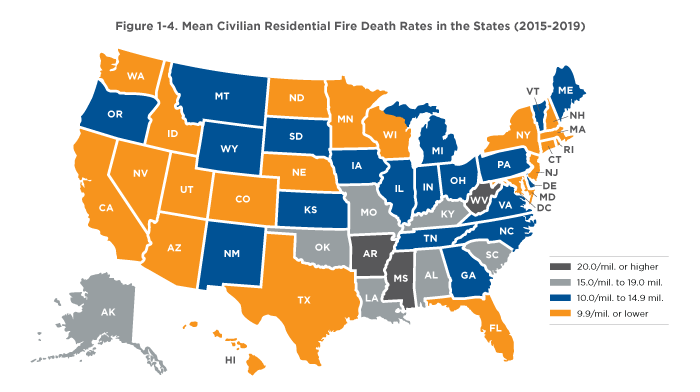“If our collective effort to develop a coordinated, coherent and comprehensive strategic action plan does nothing more than help save the life of one little girl whose body we do not have to carry out of a burned-out dwelling, then the time and energy we invested in this study will have been worth it.”
Those were the words of one of the state’s leaders in fire management to kick off the first fire mortality summit in Tennessee more than 10 years ago. In 2009, the U.S. Fire Administration found Tennessee ranked fourth highest in the nation for fire deaths at home. Thanks to work that began with that summit, now, Tennessee ranks 15th highest in the nation.
The research that contributed to the initial summit is an ongoing joint project of David Folz, professor emeritus of the UT Knoxville political science department, and Chris Shults, a grants and training specialist with the UT Municipal Technical Advisory Service (MTAS). MTAS Fire Management Consultants Steve Cross and Don Pannell and Public Works Consultant Brad Peters contributed to the project.
After the initial study, fire mortality research was conducted again in 2014 and most recently in December 2023. MTAS research indicates that the mortality rates declined significantly between 2003 and 2022, from 146 in 2003 to 108 in 2022, a reduction of 26 percent, as reported by the Tennessee Fire Incident Reporting System.

“The purpose of this study is to examine the nature, extent and causes of fire fatalities in Tennessee,” Shults says. “We want to identify the populations that have a higher risk of fire mortality, explaining why rates vary among the state’s census tracts and providing the basis to advance a plan of action to reduce and prevent civilian deaths in the state.”
Since the research was first conducted, the Tennessee Office of Fire Prevention launched two programs that have contributed to the drop in fire fatalities. Get Alarmed, TN is a grant-funded fire safety education and smoke alarm installation program. Local fire departments receive battery smoke alarms to install in at-risk homes across the state. The other program is a Close the Door campaign, highlighting video messages from fire survivors who realized that a closed door is one of the best pieces of firefighting and lifesaving efforts.
“It is great to see data that confirms a downward trend in Tennessee’s fire mortality rate. The intentional community risk reduction efforts by fire and life safety partners across the state are yielding positive results,” Pannell says. “Initiatives like the Get Alarmed program through the state fire marshal’s office and local government adoption of home fire sprinkler systems need to be supported and expanded to see a continued reduction in the fire mortality problem in Tennessee.”

Across the nation, residential fire deaths declined from 22.8 percent in 1980 to 8.3 percent in 2022, a 64.5 percent reduction. While most of the reduction occurred during the first two decades, the continued decline in fire mortality rate for the nation and for Tennessee during the last two decades indicates a sustained, modest level of progress in reducing home fire deaths despite substantial increases in population size, according to the report.
Cross says the state has invested resources in the Get Alarmed and Close the Door programs for early detection of home fires and public education.
“The most significant finding from the research was that, during the study period, no fire deaths occurred in homes equipped with an automatic fire sprinkler system. This is significant and one of the reasons why my home is equipped with an automatic fire sprinkler system,” he says. “I protect what I value most—my family.”



